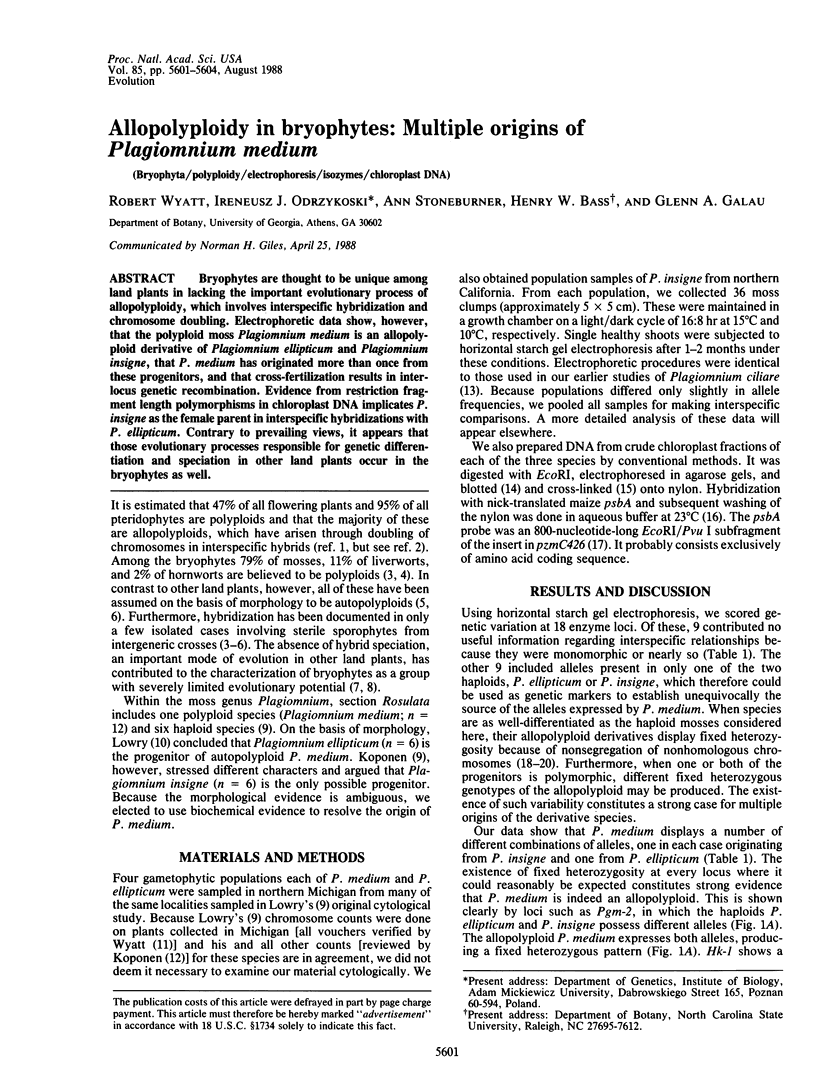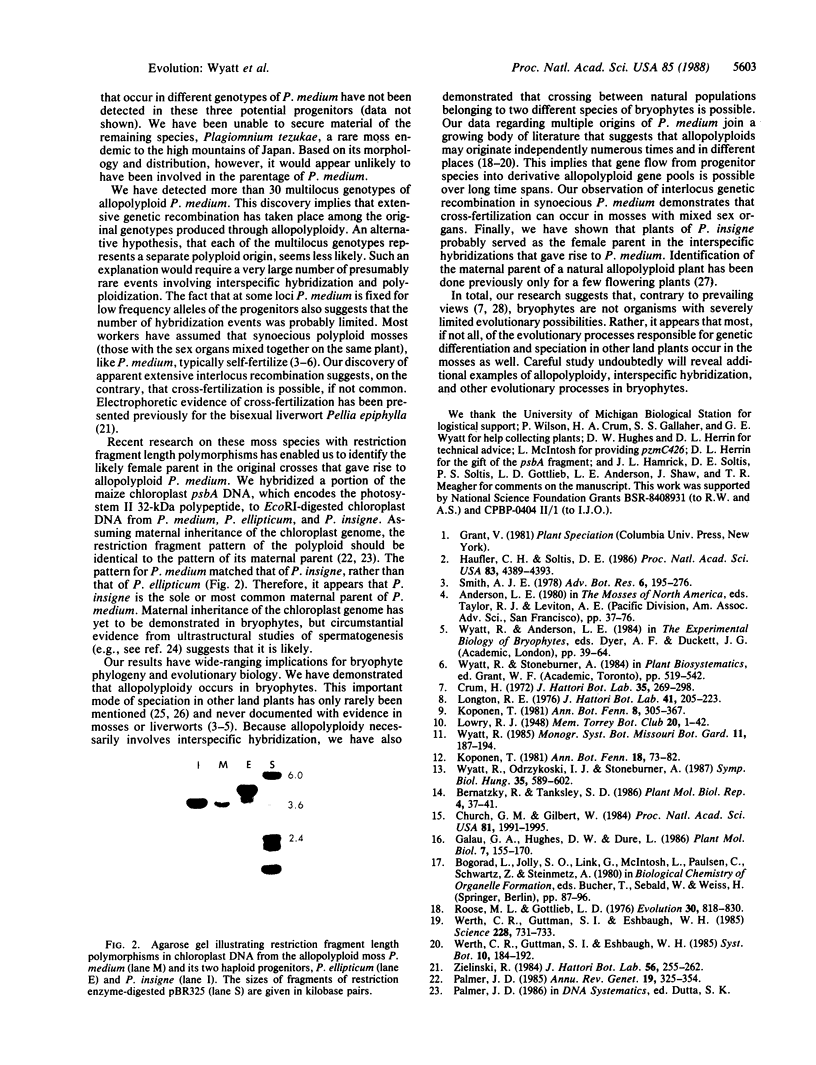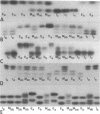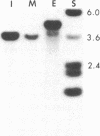Abstract
Bryophytes are thought to be unique among land plants in lacking the important evolutionary process of allopolyploidy, which involves interspecific hybridization and chromosome doubling. Electrophoretic data show, however, that the polyploid moss Plagiomnium medium is an allopolyploid derivative of Plagiomnium ellipticum and Plagiomnium insigne, that P. medium has originated more than once from these progenitors, and that cross-fertilization results in interlocus genetic recombination. Evidence from restriction fragment length polymorphisms in chloroplast DNA implicates P. insigne as the female parent in interspecific hybridizations with P. ellipticum. Contrary to prevailing views, it appears that those evolutionary processes responsible for genetic differentiation and speciation in other land plants occur in the bryophytes as well.
Keywords: Bryophyta, polyploidy, electrophoresis, isozymes, chloroplast DNA
Full text
PDF



Images in this article
Selected References
These references are in PubMed. This may not be the complete list of references from this article.
- Church G. M., Gilbert W. Genomic sequencing. Proc Natl Acad Sci U S A. 1984 Apr;81(7):1991–1995. doi: 10.1073/pnas.81.7.1991. [DOI] [PMC free article] [PubMed] [Google Scholar]
- Haufler C. H., Soltis D. E. Genetic evidence suggests that homosporous ferns with high chromosome numbers are diploid. Proc Natl Acad Sci U S A. 1986 Jun;83(12):4389–4393. doi: 10.1073/pnas.83.12.4389. [DOI] [PMC free article] [PubMed] [Google Scholar]
- Palmer J. D. Comparative organization of chloroplast genomes. Annu Rev Genet. 1985;19:325–354. doi: 10.1146/annurev.ge.19.120185.001545. [DOI] [PubMed] [Google Scholar]
- Werth C. R., Guttman S. I., Eshbaugh W. H. Recurring origins of allopolyploid species in asplenium. Science. 1985 May 10;228(4700):731–733. doi: 10.1126/science.228.4700.731. [DOI] [PubMed] [Google Scholar]




